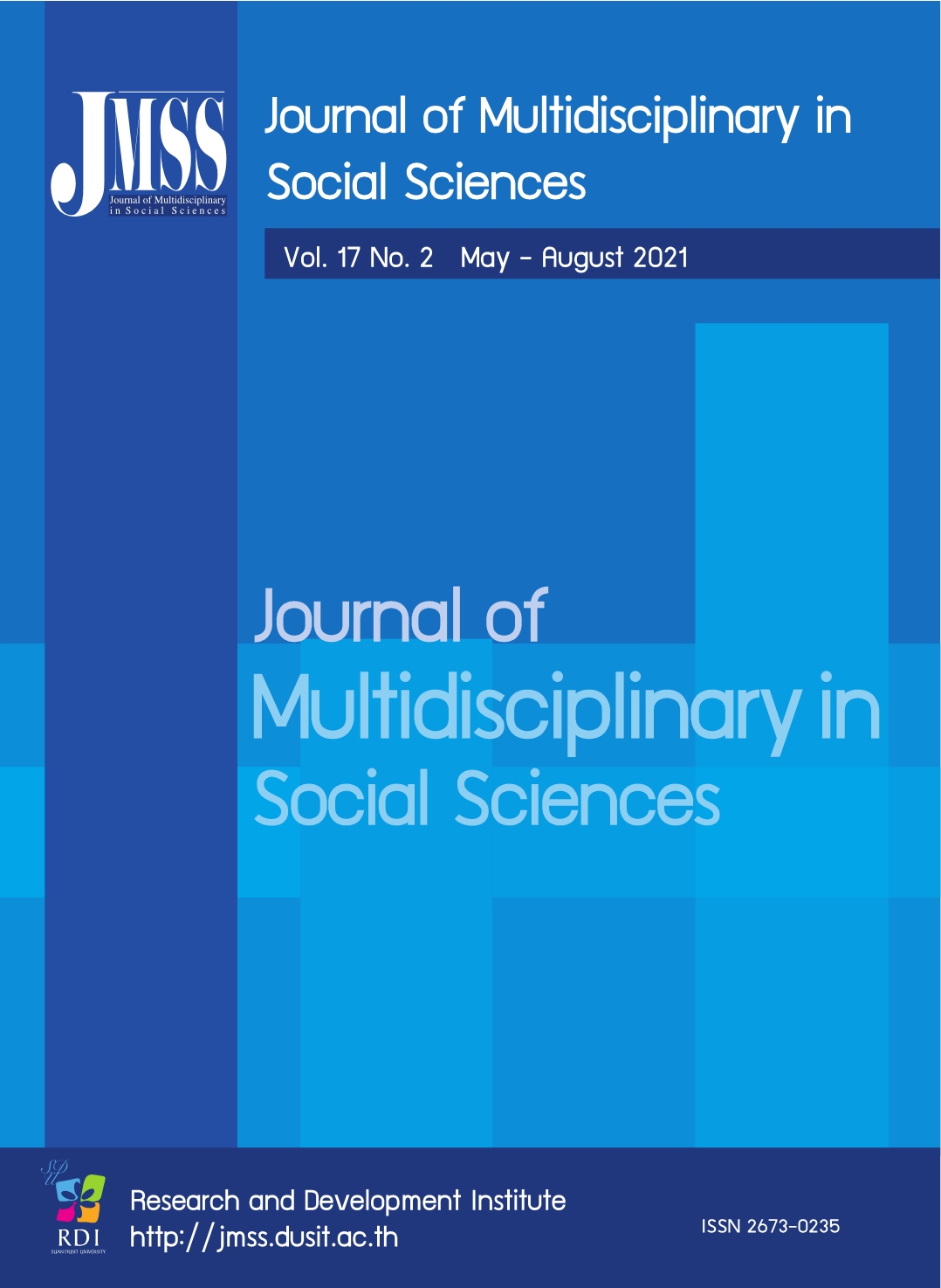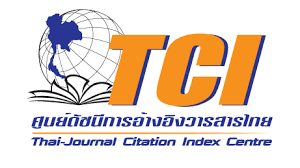An Alternative Approach to Studying Thailand’s Fertility Intention
Keywords:
Fertility intention, Rational choice, Economic behavior, Social institutionsAbstract
The ageing population phenomenon is becoming a global conundrum. One solution to address this problem is to balance the national demographic structure by boosting a country’s total fertility. The traditional way of studying this issue is to adopt the rational choice and economic behavior approaches. However, the author is of the opinion that such approaches do not fit within Thailand’s context. Thus, the author argues that it would be more appropriate to utilize the Social Institution approach to study and shed light on Thailand’s fertility intention.
References
Ajzen, I. (1991). The theory of planned behavior. Organizational Behavior and Human Decision Processes, 50(2), 179- 211.
Billingsley, S., & Ferrarini, T. (2014). Family policy and fertility intentions in 21 European countries. Journal of Marriage and Family, 76(2), 428-445.
Brentano, F. (2014). Psychology from An Empirical Standpoint. London: Taylor & Francis Ltd. Brewster, K. L., & Rindfuss, R. R. (2000). Fertility and women's employment in industrialized nations. Annual review of sociology, 26(1), 271-296.
Buracom, P. (2011). The Determinants and Distributional Effects of Public Education, Health, and Welfare Spending in Thailand. Asian Affairs: An American Review, 38(3), 113-142.
Cai, Y. (2010). China's below- replacement fertility government policy or socioeconomic development?. Population and development review, 36(3), 419-440. Chen, D. (2011). Can countries reverse fertility decline? Evidence from France’s marriage and baby bonuses, 1929–1981.
International Tax and Public Finance, 18(3), 253-272. Chuanwan, S., & Katewongsa, P. (2014). Why women are not married: where have men gone missing. Bangkok: Institute for Population and Social research, Mahidol University.
Davia, M. A., & Legazpe, N. (2014). The Role of Education in Fertility and Female Employment in Spain: A Simultaneous Approach. Journal of Family Issues, 35(14), 1898-1925.
Day, R. H. (1971). Rational choice and economic behavior. Theory and Decision, 1(3), 229-251.
Day, R. H. (2004). Behavioral economics: implications for economic theory and policy. Journal of Socio-Economics, 33(6), 715-724.
Eguchi, H., Shimazu, A., Fujiwara, T., Iwata, N., Shimada, K., Takahashi, M., & Kawakami, N. (2016). The effects of workplace psychosocial factors on whether Japanese dual-earner couples with preschool children have additional children: a prospective study. Industrial Health, 54(6), 498-504.
Fehr, H., & Ujhelyiova, D. (2013). Fertility, Female Labor Supply, and Family Policy. German Economic Review, 14(2), 138-165.
Fraser, C. D. (2001). Income Risk, the Tax- Benefit System and the Demand for Children. Economica, 68(269), 105-125.
Friedman, D., Hechter, M., & Kanazawa, S. (1994). A theory of the value of children. Demography, 31(3), 375-401.
Furtado, D. (2016). Fertility Responses of High-Skilled Native Women to Immigrant Inflows. Demography, 53(1), 27-53.
Goedele Van Den, B., & Miet, M. (2015). Female employment reduces fertility in rural Senegal. PLoS ONE, 10(3), 1-15. Hakim, C. (2003). A new approach to explaining fertility patterns: Preference theory. Population and development review, 29(3), 349-374.
Hayford, S. (2009). The evolution of fertility expectations over the life course. Demography, 46(4), 765-783.
Heaton, T. B., Jacobson, C. K., & Holland, K. (1999). Persistence and Change in Decisions to Remain Childless. Journal of Marriage and Family, 61(2), 531-539.
Heiland, F., Prskawetz, A., & Sanderson, W. (2008). Are Individuals’ Desired Family Sizes Stable? Evidence from West German Panel Data. European Journal of Population/Revue européenne de Démographie, 24(2), 129-156.
Hirschman, C., Tan, J., Chamratrithirong, A., & Guest, P. (1994). The path to below replacement-level fertility in Thailand. International Family Planning Perspectives, 20(3), 82-107.
Institute for Population and Social Research. (2019). Mahidol Population Gazette: Population of Thailand, 2019. Retrieved September 29, 2020, from http://www.ipsr.mahidol.ac.th/ipsr/Contents/Documents/Gazette/Gazette2019TH.pdf
Ishida, R., Oguro, K., & Takahata, J. (2015). Child benefit and fiscal burden in the endogenous fertility setting. Economic Modelling, 44(C), 252-265.
Jang, I., Jun, M., & Lee, J. E. (2017). Economic actions or cultural and social decisions? The role of cultural and social values in shaping fertility intention. International Review of Public Administration, 22(3), 257-275.
Laroque, G., & Salanié, B. (2014). Identifying the response of fertility to financial incentives. Journal of Applied Econometrics, 29(2), 314-332.
Luo, H., & Mao, Z. (2014). From fertility intention to fertility behaviour. Asian Population Studies, 10(2), 195-207.
Martin, P. Y. (2004). Gender As Social Institution. Social Forces, 82(4), 1249-1273.
Masaya, Y. (2013). Can child-care support policies halt decreasing fertility?. International Journal of Economics and Financial Issues, 3(2), 409-419.
McIntyre, R., & Smith, D. W. (1989). Theory of intentionality. In W. R. McKenna & J. N. Mohanty (Eds.), Husserl's Phenomenology: A Textbook. Washington D.C.: University Press of America.
McNown, R., & Ridao-cano, C. (2004). The Effect of Child Benefit Policies on Fertility and Female Labor Force Participation in Canada. Review of Economics of the Household, 2(3), 237-254.
McQuillan, J., Greil, A. L., Shreffler, K. M., & Bedrous, A. V. (2015). The importance of motherhood and fertility intentions among U.S. women. Sociological Perspectives, 58(1), 20-35.
Miller, S. (2019). Social Institutions. In E. N. Zalta (Ed.), The Stanford Encyclopedia of Philosophy (Summer 2019 ed.): Metaphysics Research Lab, Stanford University.
Miller, W. B. (1994). Childbearing motivations, desires, and intentions: a theoretical framework. Genetic, social, and general psychology monographs, 120(2), 223.
Mills, M., Begall, K., Mencarini, L., & Tanturri, M. L. (2008). Gender equity and fertility intentions in Italy and the Netherlands. Demographic Research, 18(1), 1-26.
Park, S. M., & Cho, S. i. (2011). Factors associated with second childbirth intention: focusing on value of children in Korean married women. Journal of Reproductive and Infant Psychology, 29(3), 292-304.
Park, S. M., Cho, S. I. L., & Choi, M. K. (2010). The effect of paternal investment on female fertility intention in South Korea. Evolution and Human Behavior, 31(6), 447-452.
Parsons, T. (1990). Prolegomena to a Theory of Social Institutions. American Sociological Review, 55(3), 319-333.
Phuphaibul, R., Jongudomkarn, D., Nieamsup, T., Tejagupta, C., Kumhom, R., Wacharasin, C., & ityasuddhi, D. (2018). Structural Change of Thai Families, according to Family Life Cycle: A Preliminary Study. Journal of Demography, 34(1), 1-15.
Podhisita, C. (2009). Nuptiality Change in Thailand, 1960-2000 :Implication for Future Fertility. Songklanakarin : E-Journal of Social Sciences & Humanities, 15(5), 140-165
Prifti, E., & Vuri, D. (2013). Employment protection and fertility: Evidence from the 1990 Italian reform. Labour Economics, 23(C), 77-88.
Raymo, J., & Shibata, A. (2017). Unemployment, Nonstandard Employment, and Fertility: Insights From Japan’s “Lost 20 Years”. Demography, 54(6), 2301-2329.
Ridao-Cano, C., & McNown, R. (2005). The effect of tax- benefit policies on fertility and female labor force participation in the United States. Journal of Policy Modeling, 27(9), 1083-1096.
Samutachak, B., & Darawuttimaprakorn, N. (2014). Lifestyle, life plans and the decision to have children among generation Y. Paper presented at the Birth abnd Security in Population and Society, Bangkok.
Scanzoni, J. H. (1975). Sex roles, life styles, and childbearing : changing patterns in marriage and the family. New York: Free Press.
Schoen, R., Astone, N. M., Kim, Y. J., Nathanson, C. A., & Fields, J. M. (1999). Do Fertility Intentions Affect Fertility Behavior? Journal of Marriage and Family, 61(3), 790-799.
Scott, W. R. (2005). Institutional theory: Contributing to a theoretical research program. Great minds in management: The process of theory development, 37(2), 460-484.
Searchinger, T., Hanson, C., Waite, R., Harper, S., Leeson, G., & Lipinski, B. (2013). Achieving replacement level fertility. Retrieved September 29, 2020, from http://www.wri.org/sites/default/files/achieving_replacement_level_fertility_0.pdf
Shoichiro, T. (1997). Family, community, and modernization in Asian societies : Japan, Vietnam, and Thailand. Fukuoka, Japan: Fukuoka, Japan : Asian-Pacific Center.
Snopkowski, K., & Sear, R. (2012). Kin influences on fertility in Thailand: Effects and mechanisms. Evolution and Human Behavior, 34(2), 130-138.
Soriano, G. (1991). The changing role of the family as a social institution in development in the Asia-Pacific region. New York : ESCAP.
Tavares, L. (2010). Yearning, learning and conceding: (Some of) the reasons people change their childbearing intentions. In (Vol. 029): "Carlo F. Dondena" Centre for Research on Social Dynamics (DONDENA), Università Commerciale Luigi Bocconi. The National Statistical Office. (n.d.). Gender Statistics. Retrieved September 29, 2020, from http://web.nso.go.th/gender/edu.htm
ThaiPublica. (2016). Unvealing the Lastest Data Base of Tax Payers for 2016. Retrieved September 29, 2020, from https://thaipublica.org/2016/01/personal-income-taxstructure-29/
United Nations, Department of Economic and Social Affairs, Population Division. (2013). World Population Ageing 2013. New York: The United Nations. United Nations, Department of Economic and Social Affairs, Population Division. (2019). World Population Prospects 2019. Retrieved September 27, 2020, from https://population.un.org/wpp/
Urpelainen, J. (2011). The origins of social institutions. Journal of Theoretical Politics, 23(2), 215-240.
Vapattanawong, P., & Prasartkul, P. (2014). The situation of births during the past half century. Paper presented at the Birth and Security in Population and Society, Asia Hotel, Bangkok. Wilson, C. (2004). Fertility below replacement level. Science (New York, N.Y.), 304(5668), 207.
World Bank. (2018). Fertility rate, total (births per woman). Retrieved September 29, 2020, from https://data.worldbank.org/indicator/SP.DYN.TFRT.IN?locations=TH&name_desc=true
Zucker, L. G. (1987). Institutional Theories of Organization. Annual Review of Sociology, 13(1), 443-464.
Downloads
Published
How to Cite
Issue
Section
License

This work is licensed under a Creative Commons Attribution-NonCommercial-NoDerivatives 4.0 International License.








